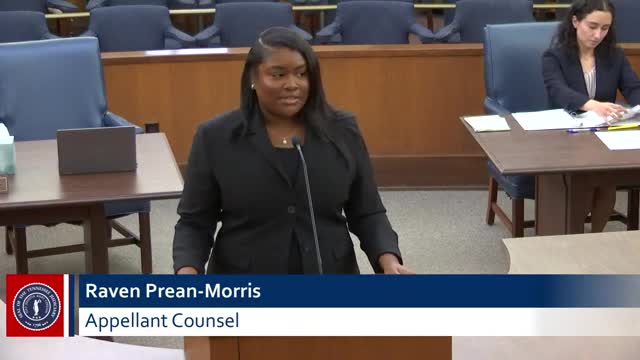Jury faces doubts over key identification in robbery case
October 02, 2024 | Judicial, Tennessee
This article was created by AI summarizing key points discussed. AI makes mistakes, so for full details and context, please refer to the video of the full meeting. Please report any errors so we can fix them. Report an error »

In a recent court proceeding, the reliability of eyewitness testimony in the case against Roger Trino Spencer Jr. was called into question. Spencer is accused of robbing a Dollar General store, with the prosecution's case heavily relying on the identification of Spencer as the man in a white shirt captured on surveillance footage.
During the trial, a store clerk testified that she positively identified Spencer as the suspect. However, her identification was challenged due to the circumstances under which she observed the suspect. The clerk admitted to only glancing at the two men as they entered the store, both of whom had their faces covered. Despite this, she claimed to have recognized Spencer based on his eye features, although she could not provide any unique characteristics that would support her identification.
Further complicating the prosecution's case, a semi-truck driver came forward after seeing a social media post about the robbery. He reported seeing two men emerge from a car, but could not recall the vehicle's license plate or any distinguishing features. His identification of a black car, which was captured by a camera system, was also deemed unreliable, as it was timestamped two hours before the robbery occurred.
Investigator Carter, who presented evidence linking Spencer to the crime, suggested that Spencer's ownership of generic white and black shoes and a dark bandana was enough to implicate him. However, the defense argued that these items were too common to establish a definitive connection to the robbery.
The defense emphasized that the combination of unreliable eyewitness testimony and weak circumstantial evidence created reasonable doubt regarding Spencer's guilt. They argued that the law provides for meaningful appellate review to prevent wrongful convictions based on unreliable identifications.
As the jury deliberates, the case highlights the critical importance of reliable evidence in criminal proceedings and the potential consequences of flawed eyewitness accounts.
During the trial, a store clerk testified that she positively identified Spencer as the suspect. However, her identification was challenged due to the circumstances under which she observed the suspect. The clerk admitted to only glancing at the two men as they entered the store, both of whom had their faces covered. Despite this, she claimed to have recognized Spencer based on his eye features, although she could not provide any unique characteristics that would support her identification.
Further complicating the prosecution's case, a semi-truck driver came forward after seeing a social media post about the robbery. He reported seeing two men emerge from a car, but could not recall the vehicle's license plate or any distinguishing features. His identification of a black car, which was captured by a camera system, was also deemed unreliable, as it was timestamped two hours before the robbery occurred.
Investigator Carter, who presented evidence linking Spencer to the crime, suggested that Spencer's ownership of generic white and black shoes and a dark bandana was enough to implicate him. However, the defense argued that these items were too common to establish a definitive connection to the robbery.
The defense emphasized that the combination of unreliable eyewitness testimony and weak circumstantial evidence created reasonable doubt regarding Spencer's guilt. They argued that the law provides for meaningful appellate review to prevent wrongful convictions based on unreliable identifications.
As the jury deliberates, the case highlights the critical importance of reliable evidence in criminal proceedings and the potential consequences of flawed eyewitness accounts.
View full meeting
This article is based on a recent meeting—watch the full video and explore the complete transcript for deeper insights into the discussion.
View full meeting
